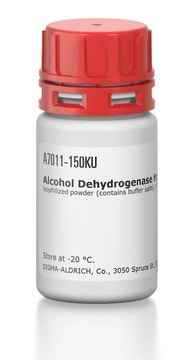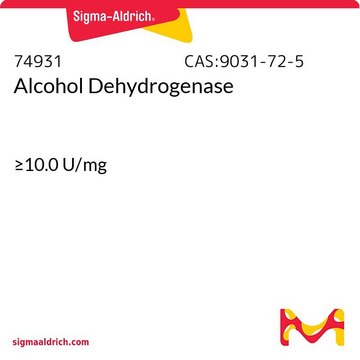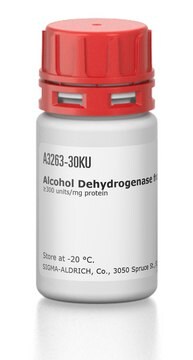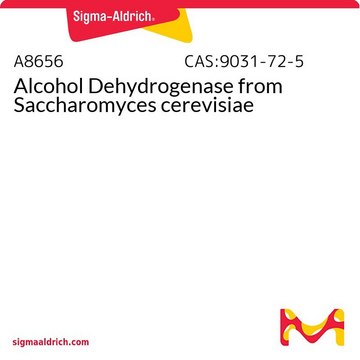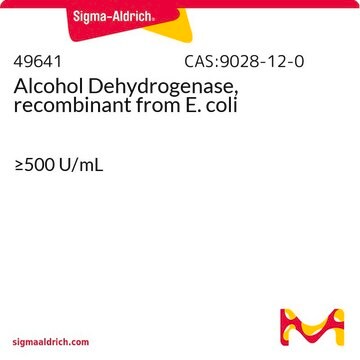55689
Alcohol Dehydrogenase equine
recombinant, expressed in E. coli, ≥0.5 U/mg
Synonym(s):
ADH
About This Item
Recommended Products
biological source
equine
recombinant
expressed in E. coli
description
Isozyme E sequence
form
lyophilized powder
specific activity
≥0.5 U/mg
color
white
light yellow
pH
7
solubility
water: 5 mg/mL
application(s)
life science and biopharma
storage temp.
−20°C
Gene Information
equine ... ADH1(111772995)
Looking for similar products? Visit Product Comparison Guide
General description
Alcohol dehydrogenase is a zinc metalloprotein that forms five classes of isoenzymes through the dimerization of eight different subunits.
Application
Biochem/physiol Actions
Unit Definition
Signal Word
Danger
Hazard Statements
Precautionary Statements
Hazard Classifications
Resp. Sens. 1
Storage Class Code
11 - Combustible Solids
WGK
WGK 1
Flash Point(F)
Not applicable
Flash Point(C)
Not applicable
Certificates of Analysis (COA)
Search for Certificates of Analysis (COA) by entering the products Lot/Batch Number. Lot and Batch Numbers can be found on a product’s label following the words ‘Lot’ or ‘Batch’.
Already Own This Product?
Find documentation for the products that you have recently purchased in the Document Library.
Our team of scientists has experience in all areas of research including Life Science, Material Science, Chemical Synthesis, Chromatography, Analytical and many others.
Contact Technical Service